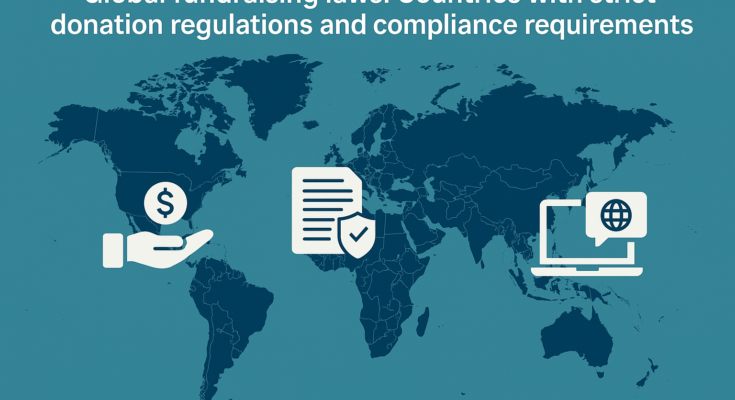Mastering Fundraising: Strategies, Laws, and Global Insights
Fundraising is the art of rallying financial support from individuals, businesses, or institutions to fuel a cause, project, or initiative. Whether through traditional methods or digital campaigns, it’s a vital lifeline for nonprofits, startups, and community efforts. Let’s explore the different types of fundraising, how to launch a winning campaign, and the legal landscape shaping this space globally.
Types of Fundraising: From Micro-Donations to Mega-Gifts
- Individual Donations
Small but mighty, these contributions come from everyday supporters. Think social media drives, email campaigns, or community events. Even modest amounts add up when pooled together. - Corporate Giving
Companies contribute through direct donations, event sponsorships, or in-kind services as part of their Corporate Social Responsibility (CSR) programs. - Grants
Funds awarded by governments, foundations, or NGOs after a formal proposal. Grants often require detailed plans, budgets, and measurable outcomes. - Crowdfunding
Harness the power of the crowd via platforms like GoFundMe (personal causes), Kickstarter (creative projects), or LaunchGood (faith-based initiatives). Patreon also lets creators earn recurring support. - Endowments & Major Gifts
Large, long-term donations—often from wealthy individuals or trusts—to fund institutions like hospitals, schools, or cultural centers.
5 Steps to a Winning Fundraising Campaign
- Define Your Goal
Be specific: “We need $50,000 to build a community library by December.” Pair numbers with heartfelt storytelling to inspire action. - Pick Your Platforms
- Social media for viral reach.
- Email newsletters for loyal supporters.
- Dedicated campaign websites or crowdfunding pages for centralization.
- Leverage Visual Storytelling
Use real photos, short videos, and testimonials. Show the faces behind your cause—donors connect with people, not spreadsheets. - Engage & Involve
Encourage sharing, offer monthly donation options, and update supporters transparently. A progress bar showing funds raised can boost momentum. - Show Impact
Post-campaign, share how funds were used. Did you build that library? Post a video tour! Transparency builds trust for future giving.
Quick Tips for Success
- Proactively Reach Out: Don’t wait for supporters to find you—bring your cause to them via ads, personal appeals, or events.
- Set Deadlines: Urgency drives action. “Help us raise $10K by June 30!”
- Offer Incentives: Recognize top donors with shoutouts, certificates, or exclusive updates.
- Simplify Donating: Provide instant options like QR codes, mobile payments, or bank transfers.
Fundraising Laws: Navigating Legal Boundaries
Many countries tightly regulate fundraising to prevent fraud, money laundering, or terrorism financing. Here’s a snapshot:
Strict Regulations in the Middle East
- Saudi Arabia: Only licensed platforms like Ihsan and the National Charitable Foundation can collect donations. Violators face fines or legal action.
- UAE: Approval required from entities like the Emirates Red Crescent. Unauthorized campaigns risk fines or jail time.
- Kuwait: Social media fundraising is banned without permits from the Ministry of Social Affairs.
- Qatar: Licensed organizations (e.g., Qatar Charity) hold exclusive fundraising rights.
- Egypt & Jordan: Government oversight ensures funds align with approved social initiatives.
Western Regulations
- USA, UK, Canada: Require nonprofits to register, file financial reports, and obtain permits for public campaigns.
Why Compliance Matters
Even well-intentioned, unlicensed fundraising can lead to legal trouble. Governments prioritize transparency to protect donors and prevent misuse. Always research local laws before launching a campaign.


